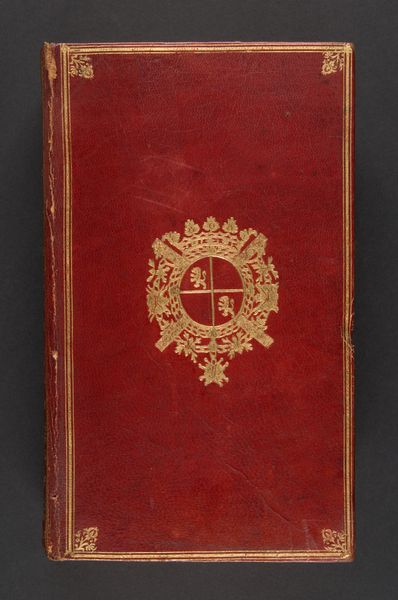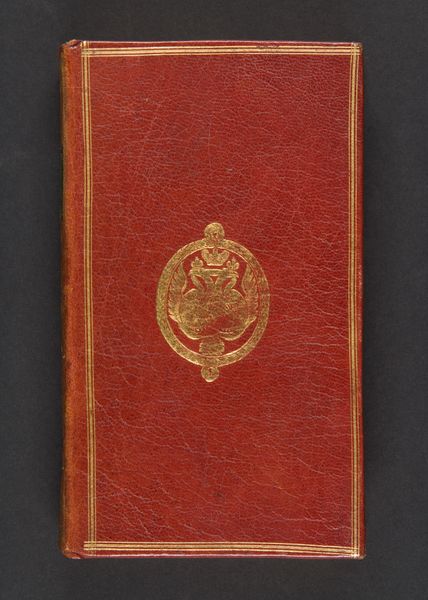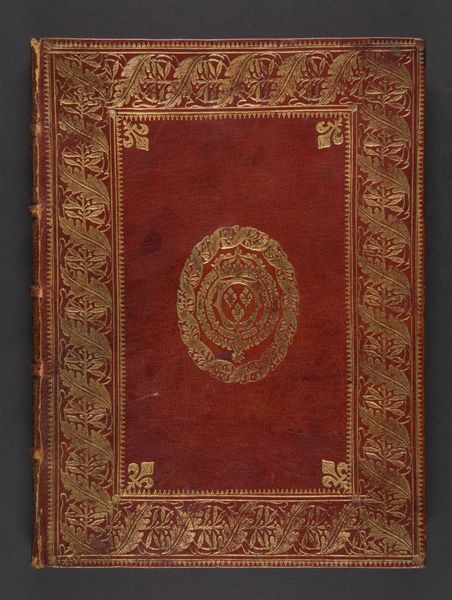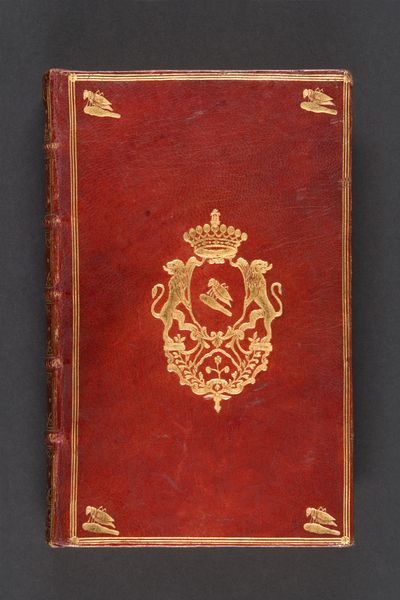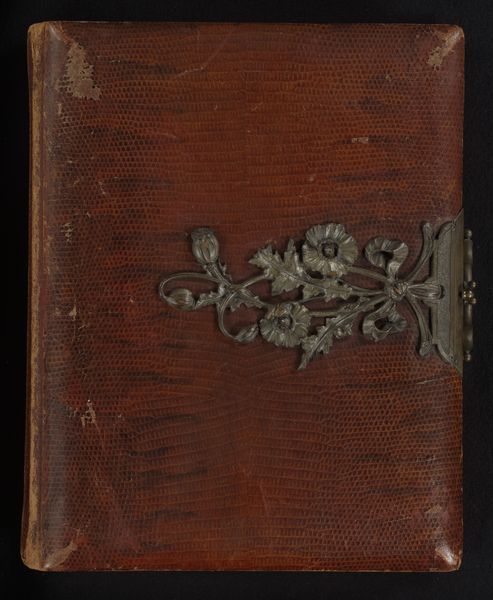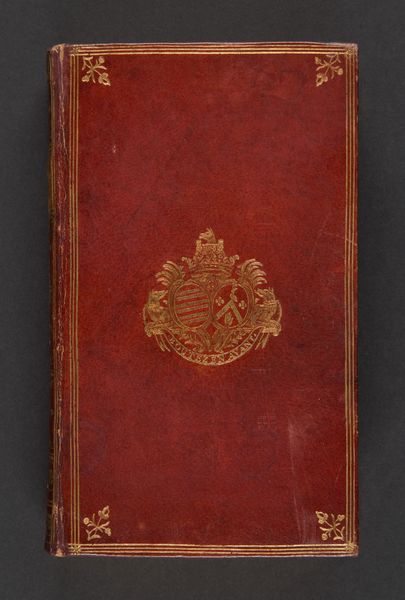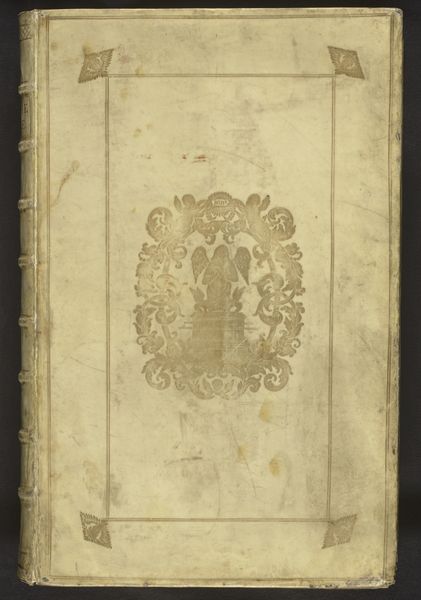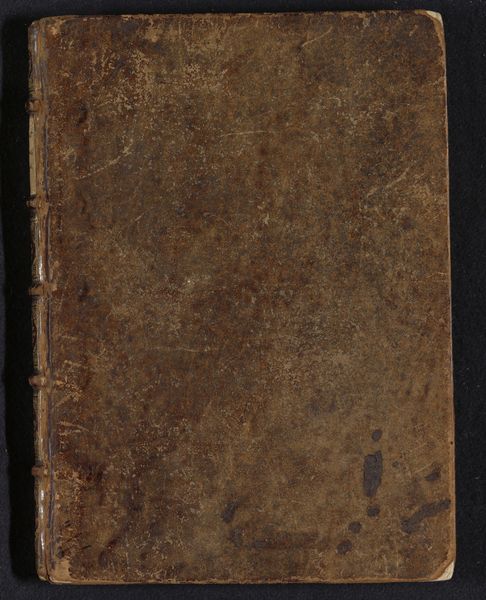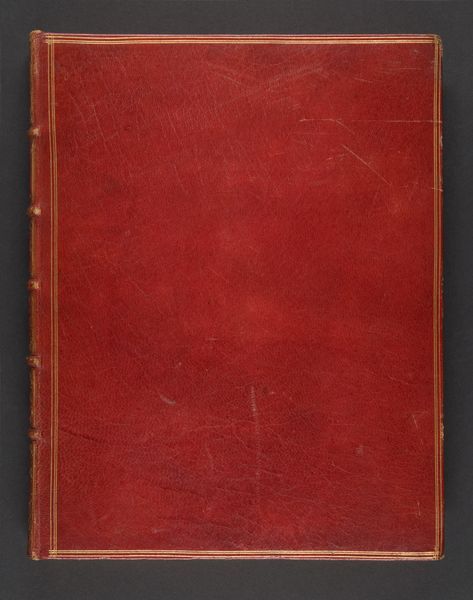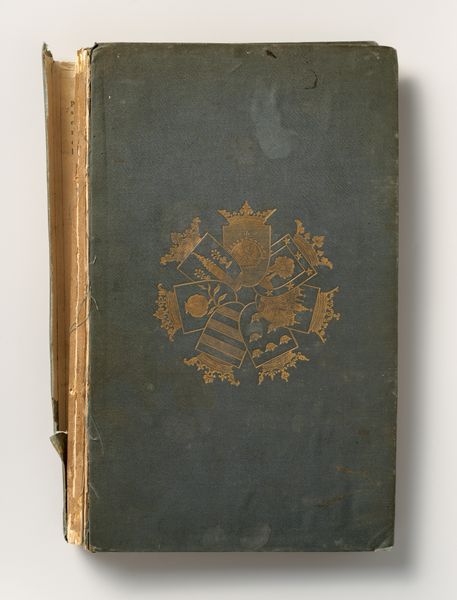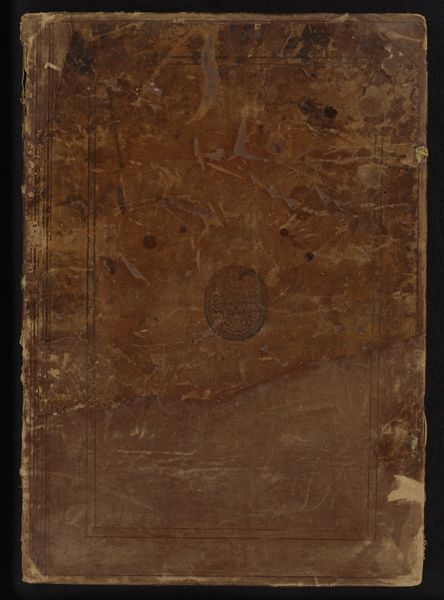
A. Persii Satyrarum liber I.D. Iunii Iuuenalis Satyrarum lib. V. Supliciae Satyra I : cum veteribus commentarijs nunc primum editis ex bibliotheca P. Pithoei I C. cuius etiam notae quaedam adiectae sunt 1585
0:00
0:00
embossing
#
aged paper
#
book binding
#
textured paper
#
paper non-digital material
#
paper texture
#
11_renaissance
#
embossing
#
different material of paper
#
folded paper
#
embossed
#
france
#
design on paper
#
foil embossing
Dimensions: 12, 302, 10 pages; Height: 6 11/16 in. (17 cm)
Copyright: Public Domain
Editor: This is "A. Persii Satyrarum liber...", a book from 1585 currently residing at the Metropolitan Museum of Art. The cover is so striking! It’s aged and worn, but I’m drawn to the golden emblem embossed on the reddish-brown leather. What visual elements stand out to you, and what do you make of their interplay? Curator: The book's appeal certainly lies in its material qualities. Consider the texture of the leather itself, how it invites tactile engagement. The golden emblem provides a stark contrast in colour and texture, doesn’t it? It serves as a focal point, disrupting the homogeneity of the leather expanse. The frame and emblem utilize the semiotics of form and their symbolic resonance to direct and deepen visual experience. Editor: Yes, the emblem really catches the eye. What’s the effect of embossing the emblem rather than just printing it? Curator: The embossing is crucial. It not only provides visual depth and heightens tactility but also establishes a dialogue between the flat surface of the book cover and the three-dimensionality of the emblem. How would you say it transforms the object? Editor: It definitely elevates it, making it feel more precious and substantial. Almost like a sculptural element on a functional object. Does the deterioration along the edges and spine also contribute something? Curator: Indeed. The wear and tear are not mere defects but integral aspects of the object’s visual narrative. They evidence the passage of time and the book's handling. That activates historical experience through texture, and highlights the richness that accompanies an artifact from 1585. Editor: So, it’s a story told through material and form? Curator: Precisely! By considering these formal properties, we gain a deeper appreciation for its aesthetic and historical presence. It invites a certain decoding based on the object and sign. Editor: This really shifts my perspective. I was focused on the 'story' the book might contain, but I now see the book itself as a fascinating artifact with its own story embedded in its structure! Curator: Absolutely. Recognizing that shifts and refines our capacity to observe, analyze and therefore truly see.
Comments
No comments
Be the first to comment and join the conversation on the ultimate creative platform.

